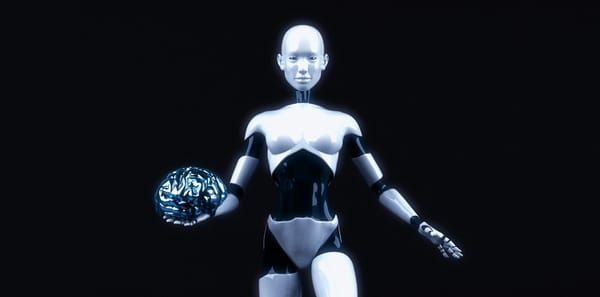The Game-Changer, AI in Crafting Job Descriptions
Modern times call for modern methods, and in the modern corporate landscape, modernity is much needed. Businesses that want to thrive and foster a productive workforce first need to find the right people for the job. But how are businesses supposed to do that? Finding the right candidates for a job isn’t an easy task, of course. The way to achieve such a thing is to correctly and efficiently advertise a job and find the right candidate through an efficient and smart job description. This is what makes job descriptions such an important thing in the modern business landscape.
What Makes Traditional Job Descriptions Outdated
Until now, businesses craft job descriptions with the traditional method. HR professionals are assigned to this task and get the job done, but the conventional job description processes hinder the effectiveness of recruitment. Some common issues are:
· Generic Language: Most job descriptions contain generic language that fails to showcase the job correctly. They usually contain misleading and inaccurate information about the job and result in attracting unqualified candidates or not attracting candidates at all.
· Biased Language: Another common issue is that these job descriptions often contain biased language. Professionals that compose job descriptions may subconsciously use biased language, leading to the exclusion of candidates with diverse backgrounds.
· Outdated Job Description: Jobs constantly evolve, and thus, traditional job descriptions may not include updated job information.
· Complex and Lengthy Descriptions: The final results of traditional job descriptions may be lengthy and full of unnecessary details that tend to make them complex. This way, candidates may become confused and find it hard to identify the key responsibilities of a job.
To overcome the addressed common issues of traditional job descriptions, AI is here to make them more efficient and effective. With AI’s powers, businesses can craft smart job descriptions and attract talented candidates while creating a diverse work environment.
AI’s Advantages in Crafting Job Descriptions
The possibilities that AI brings to job descriptions are countless. Of course, AI overcomes all the previously addressed issues and crafts smart job descriptions that take organizational recruitment to the next level.
To begin with, AI-generated descriptions ensure that their language contains keywords and phrases that are relevant to the job posting and, indeed, doesn’t use biased language, leading to a larger visibility scale on search engines while improving inclusivity.
Another great aspect of the AI-crafted job descriptions is the time saved. AI generates job descriptions in a matter of seconds and saves a lot of time for HR professionals, allowing them to focus on other tasks.
While these may be fascinating and promising for businesses, there are more. As many may already know, AI draws information from a large database and the web. This means that AI-crafted job descriptions are data-driven and always provide updated information regarding the job the user wants.
Transitioning Smoothly into The AI Phase
Though AI’s powers seem fascinating, integrating them into your business’s recruitment plan isn’t a simple process. In terms of job descriptions, it is necessary to help HR professionals through the transition phase and take it smoothly. Teaching them that using AI-powered tools to enhance the recruitment process rather than letting them believe that AI is going to replace them is vital.
To continue with, employees have to learn how to leverage it efficiently and get the best outcome possible. Consequently, businesses can level up their recruitment process and efficiently attract the most suitable candidates for their vacant job roles while maximizing resources, such as time and costs, and clearly informing potential candidates for their responsibilities.
Dealing With Common Challenges When Implementing AI
On the other hand, implementing AI-powered tools hinders some challenges. These challenges are not big obstacles and are easy to overcome, but note that there are some other challenges that are made up. The most common challenge of the AI’s powers is the fear of biased language that it may use in its generated job descriptions. Such a thing is rare due to AI’s neutral way of writing, but it may occur if the database from which it is acquiring info consists of biased content. The solution to this challenge is to always review the final results and make necessary changes if needed.
Another common challenge is resistance to change, which we already talked about earlier in the article. The solution? Of course, the right employee training for leveraging AI’s powers and making clear that it is here to enhance their efforts and not to replace them. In addition to this, businesses are also skeptical because of the difficulties in integrating Job Description Crafting AI tools into their existing Human Resources Information Systems. Luckily, the solution here is simple. Businesses can work with vendors that support or already provide AI tools to their systems and make their lives easier and more efficient.
Getting ready for this transitional period and entering the AI phase is vital for businesses. Acting proactively on such challenges sets the basis for a future of high productivity and efficiency while ensuring a high-brand profile for organizations that encourages inclusivity.
What to Expect: The Future of AI and Hiring
As we already stated before, AI’s powers are unlimited. These powers won’t stop on just crafting smart job descriptions but will automate and streamline the whole recruitment business of businesses, from automated candidate screening to hiring and tailored training for each new hire in order to prepare them for their new responsibilities and make sure that they have the needed skills to get their jobs done.
Whatever the future holds is exciting and, for sure, will help organizations increase their efficiency and productivity more and more. So, for businesses that want to keep thriving and evolving, adopting AI-powered tools early will give them an advantage ahead of the others.




